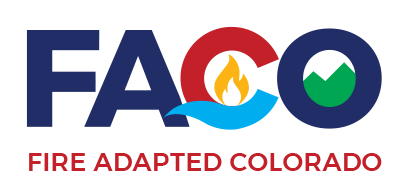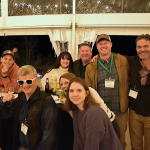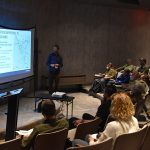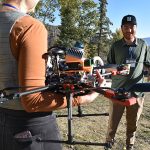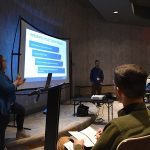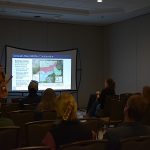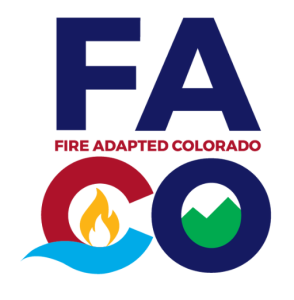Harvesting Resilience
Early October, in beautiful Snowmass, participants and enthusiasts of Colorado’s Wildfire Resilience Network, gathered to garner strategies that can make our state more resilient to wildfire. With 251 registered attendees onsite, this conference ranked among our best-attended events, featuring a notable influx of first-time participants, including some who were sponsored by CFCN, SRFSN, COCO and from the proceeds from last year’s conference’s silent auction. It was a great investment, sowing the next generation of wildfire resilience leaders in Colorado communities. 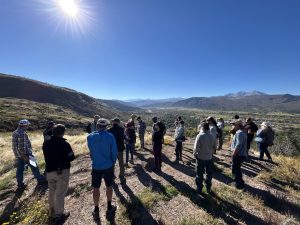
Snowmass was the perfect location to celebrate the hard work behind us, to learn from the successes and challenges of our peers, and to take a tactical pause from our project work, our response efforts and all of the other items on our already full plates.
With a range of keynotes, panels, presentations, plenary sessions, micro talks, and pre and post-conference activities; there was something for everyone – including network and conference socials testing our wildfire trivia skills, while we made new connections, and strengthened existing relationships that support collaborative efforts with our partners to create better wildfire outcomes for Colorado communities and landscapes.
Annalise Grueter, with the Sopris Sun, discussed the CWFC with Paul Cada, the Fire Adapted Colorado chairperson and the Wildland program manager for Vail Fire, to share takeaways from this year’s conference. We’ve also made most of the presentations available on the FACO website, and shared some videos on the FACO YouTube channel | CWFCPast Presentations playlist, including the Wildfire Resiliency Code Board’s Minimum Codes and Standards Progress Update.
Wildland program manager for Vail Fire, to share takeaways from this year’s conference. We’ve also made most of the presentations available on the FACO website, and shared some videos on the FACO YouTube channel | CWFCPast Presentations playlist, including the Wildfire Resiliency Code Board’s Minimum Codes and Standards Progress Update.
Harvesting resilience through wildfire mitigation is not a solitary endeavor; it requires the commitment of individuals, communities, and local governments. It requires collaboration among partners and stakeholders. Individually, it requires some basic tools, like a rake, lawnmower, weed trimmer and pruning shears, along with an investment of time to implement simple, practical, low-cost actions that can lower your risk. The more you do to prepare and plan ahead, the more likely your family and home will survive a wildfire. [1]
The FACO social event, coinciding with the wildland fire conference, marked the recognition of several distinguished awardees, for their contributions:

- 2024 FACO Network Award: Tom Welle from the West Metro Fire Rescue
- FACO Network Engagement Under 2 Years: Josh Hankes, Routt County Wildfire Council
- FACO Network Engagement Over 2 Years: Steve Orr with Boulder Fire-Rescue
- Creative Approaches to Mitigation: Katie Jenkins from Eagle County Wildfire Mitigation
- Increasing Capacity Award: Duane Poslusny from Team Rubicon
- Recognition for Connecting Science & Practice: Gloria Edwards with the Southern Rockies Fire Science Network
- Leveraging Relationships to Make Mitigation Happen: Ross Hallihan from the Huerfano County Office of Emergency Management, and Dawn Leverik and Lisa Garrison from the Spanish Peak Alliance for Wildfire Protection
October is also a time to reflect on the 2020 wildfire season, as well as the many other October wildfires that we see in Colorado. What makes the 2020 wildfire season stand out as the worst year in Colorado fire history are the 2020 Cameron Peak, East Troublesome, and Pine Gulch Fires, collectively burning over 540,000 acres. The Cameron Peak Fire was Colorado’s first fire over 200,000 acres, (it was first reported in August and burned for nearly four months), and is featured in the Fireforest Film, screened at the 2024CWFC.
October 2020’s East Troublesome Fire was Colorado’s second-largest fire (to date), and burned 193,812 acres between its ignition on October 14, 2020, and its containment on November 30. The fire destroyed 555 structures and killed two people, devastating portions of the community of Grand Lake. The majority of the fire’s burned acreage and structural losses accrued on October 21, when the fire burned more than 100,000 acres in a single day. There are many other smaller, but notable October wildfires in Colorado, such as the 2016 Junkins fire, 2019 Decker fire, and 2023 Saint Charles Fire. According to the Colorado Division of Fire Prevention and Control website, “Today, the average core wildfire season is 78 days longer than in the 1970’s, with Colorado experiencing large fires every month of the year.”
The 20th-century interruption of the ecological fire workload (fire suppression and grazing) led to historically high levels of fuels available to burn, exacerbated by rising temperatures, prolonged droughts, changing precipitation patterns, and extreme wind events. These conditions contribute to longer and more intense wildfire seasons posing significant risks to ecosystems, air quality, and communities. Efforts to mitigate climate change and improve forest management practices are critical to addressing these challenges. It’s only through collaboration and sustained effort, that we can cultivate resilience and foster a safer future for all. As we reflect on the 2024 Colorado Wildland Fire Conference and its theme of ‘Meeting the Moment’, it’s time to step up to the challenges of our generation.
